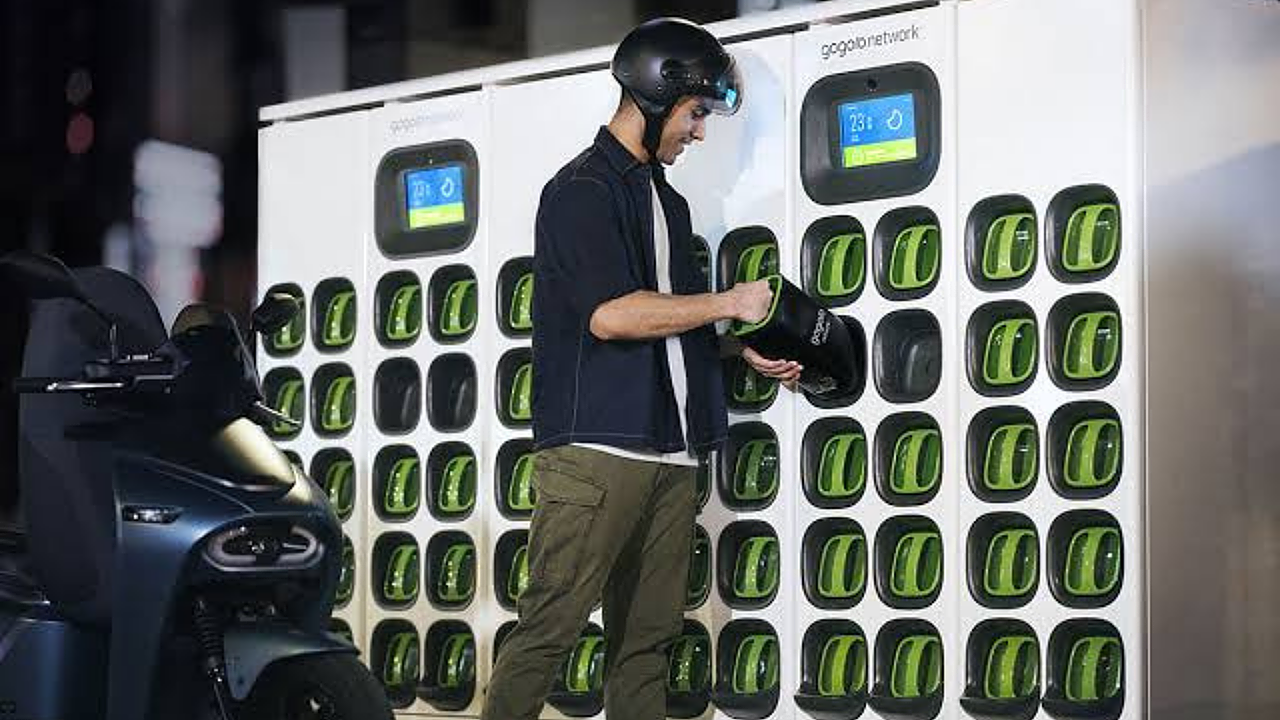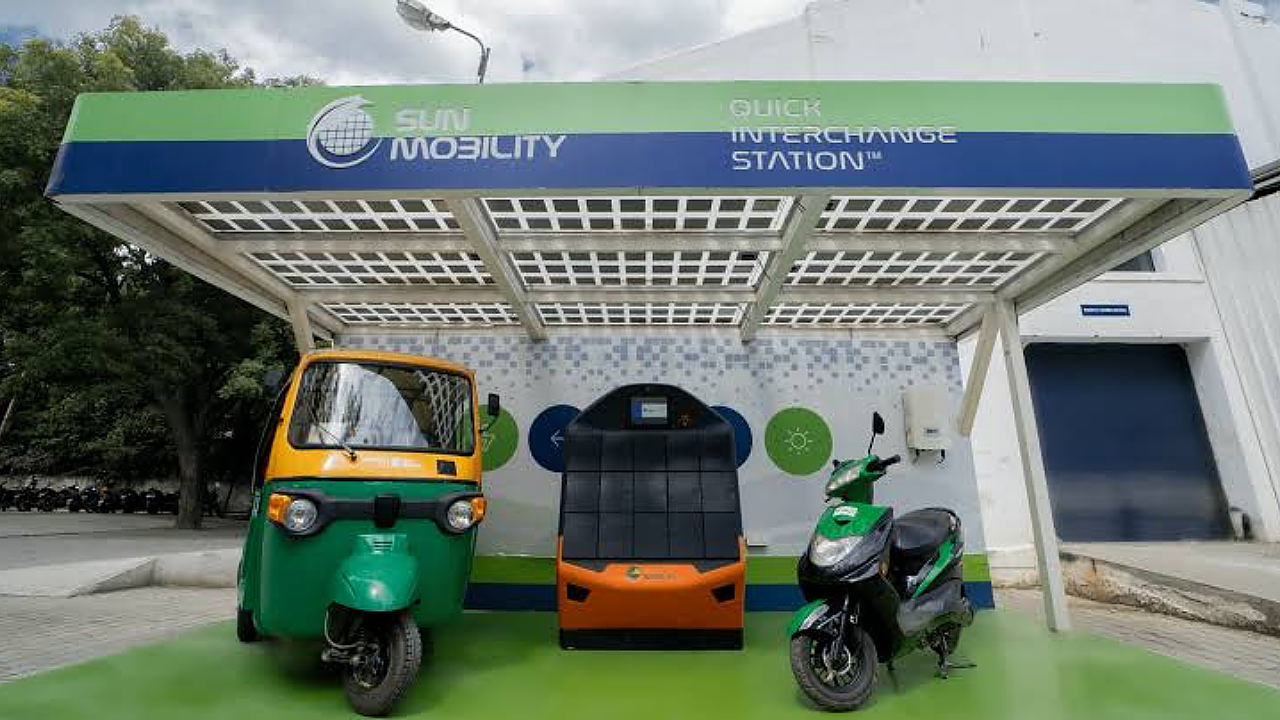
One of the key points of the battery swapping policy that the Government of India is formulating is to de-link the battery from the electric vehicle (EV) so that the purchase cost comes down, and the vehicle downtime due to charging is done away with.
This, in turn, is likely to spur the growth of Battery- or Energy-as-a-Service, with start-ups and others tapping it as a viable business.
The National Institution for Transforming India (NITI Aayog), the Government of India’s think-tank, has been tasked with the responsibility of holding consultations with various stakeholders in the ecosystem and framing a policy for swapping batteries on EVs. The NITI Aayog has held a round of discussions with stakeholders and is scheduled to hold a few more rounds before various issues are ironed out and the policy outlined, according to people in the know.
The policy itself is a follow up to the announcement in the 2022-23 Union Budget by Finance Minister Nirmala Sitharaman. “Considering the constraint of space in urban areas for setting up charging stations at scale, a battery swapping policy will be brought out and interoperability standards will be formulated. The private sector will be encouraged to develop sustainable and innovative business models for ‘Battery or Energy as a Service’. This will improve efficiency in the EV ecosystem,” she said in her budget speech.
A concept note on battery swapping policy circulated by NITI Aayog said the policy would initially focus on electric two/three-wheelers “given their cost parity with internal combustion engine equivalents, and the rising demand for these vehicles, especially in commercial applications.”
EVs come with their own fixed batteries that have a shorter life when compared with that of the vehicle. Battery swapping is meant to be an alternative to replacing old batteries; typically, a discharged battery will be swapped with a charged one, and the discharged battery will be sent for charging so that it can be used again. This will de-link the vehicle and the fuel (in this case, the battery) and offers the flexibility to switch the battery Charge Point Operator (CPO) and original equipment manufacturers without affecting the vehicle’s life or performance.
Swapping Benefits
Setting up battery swapping stations as against charging points helps in several ways.
- One, those buying an electric two/three-wheeler can opt to buy the vehicle without the battery, thus bringing down their initial capital expenditure substantially; a battery accounts for as much as 35% of an EV’s cost. The vehicle owner can then subscribe to any swapping operator and pay for each swap.
- Two, it ensures that the vehicle will be on the road for a longer time than if the batteries were to be charged; a discharged battery can be swapped within minutes.
- Three, swapping stations do not require as much space as charging stations.
- Four, there will be scope for Battery-as-a-Service (BaaS) companies that will source batteries from different battery manufacturers and offer them for swapping.
But for all these to take off, the batteries have to be interoperable, which means that any battery can be used irrespective of the electric two/three-wheeler manufacturer. This is what the Government hopes to achieve by pushing for standardisation. However, according to experts in the field, several issues need to be sorted out, which will prevent easy standardisation.
According to Dev Ashish Aneja, Assistant Vice-President, Invest India, the national investment promotion and facilitation agency set up by the Commerce and Industry Ministry, battery swapping is the need of the hour. This was one missing link in the overall scheme of things regarding EVs, and the Government is working on this aspect.
Industry consultations are happening, and NITI Aayog should roll out the draft policy shortly. Swapping does help solve two major problems from a city standpoint – it helps in much better utilisation of real estate in prime locations in the metros along with an efficient load balancing of the grid. With battery swapping gaining ground, there will be many combinations of batteries, vehicles and energy operators, and a razor-sharp focus on safety will be of prime importance to all stakeholders.
Against Standardisation
According to sources in the know, a section of the industry is not in favour of standardisation as it feels that such a move will kill innovation and stall research and development. This section prefers that the market forces decide various aspects of the battery, such as form factor, dimension, battery chemistry and connector.
However, the Government is looking at this from the perspective of the masses so that EV adoption increases, the cost of buying an EV comes down and swapping stations are used to the maximum extent possible for them to be viable businesses. Swapping stations will be utilised only if the batteries are compatible with most vehicles, which will happen only when there is standardisation. The Government is keen that battery swapping stations come up in and around cities, where EV usage is the highest.

The proposed swapping policy will focus on light vehicles so that the vehicle users themselves can do it. There is no need for investment in real estate or machinery to swap batteries for electric two/three-wheelers.
The larger and established vehicle manufacturers, which are spending huge sums of money and time on R&D, will also be against standardisation as they feel their efforts will go waste and that their products can be reverse-engineered and made by anybody without going through the trouble.
Global players too will prefer to have their own standards as it will help them carve out their market share. However, those players that are waiting to enter the market will benefit once the batteries are standardised as they can develop their products as per these norms.
Global Scenario
Globally, swapping has been successful only for two-wheelers and light vehicles, although a handful of Chinese companies claim to be successful at battery swapping for electric cars. The Government of India is thinking of the swapping policy only for two/three-wheelers and does not have plans to include cars in this.
According to industry experts, car batteries are much heavier and will need considerable investments in swapping; a 30 kWh battery could weigh more than 200 kg. This means that swapping stations for cars will require ample space and a huge investment in machinery and manpower, making it unattractive and unviable.
Globally, battery charging facilities dominate swapping as an option and are becoming increasingly popular, especially in parts of Europe, the US, and a few Asian countries. Taiwanese company Gogoro is a leading player in the battery swapping space and even inked a joint venture agreement in April 2021 with Hero MotoCorp to set up swapping stations.
According to NITI Aayog’s concept note, in 2021, China approved its first official swappable EV battery standards and safety guidelines. Chinese EV start-up Nio has developed a network of more than 700 battery swapping stations in China and has signed agreements with companies such as Shell to set up battery swapping stations in the UK. It is also offering BaaS model for electric four-wheelers in Norway, where customers buy a vehicle without a battery and pay a monthly fee to use the battery swap network.
The note adds that US-based start-up Ample has set up five battery swap stations in San Francisco, specifically for Uber drivers. The EV drivers can swap a spent battery for a fully charged one in less than 10 minutes. The EV market is also seeing the likes of Honda, Yamaha and Piaggio announcing a collaboration to develop swappable batteries for light EVs.
The Indian market, according to industry experts, is different. Two-wheelers dominate the market, accounting for almost 80% of EVs on the road; there are about ten lakh EVs on the roads, and the strategy has to be tailored accordingly.
Gaining Ground
Though still at a nascent stage in the country, battery swapping is gaining ground with a number of start-ups offering BaaS. The main users of this are the gig economy workers – delivery agents of food aggregators such as Swiggy and Zomato, those operating for concierge services such as Dunzo or e-commerce marketplaces such as Amazon and Flipkart. For them, according to industry experts, it makes tremendous sense to remove the cost of the battery while buying an EV. They will sign up for battery swapping networks, thus ensuring that the downtime of their vehicles is significantly reduced.
RK Misra, President – Ecosystem Development, Yulu Bike, a leading shared and sustainable micro-mobility platform, points out that battery is the new oil. “Like we are talking about oil today, for the next 30 years or more, we will talk about battery.”
With a number of companies drawing up plans to produce electric two/three-wheelers on a large scale, it is the battery that will decide the future. The Government’s intention in talking about standardisation or working on a battery swapping policy is clear – the target is the gig economy, as, for the workers, every bit of saving will mean a lot.
While the Government has talked about standardisation, it has not clarified the same. The Government, Misra says, should be the aggregator of the idea and the facilitator of innovation, apart from being an honest regulator. It should not be the prescriptor.
The Government’s intent on standardisation and the battery swapping policy will help the nearly 15 million gig economy workers. Almost all of them earn their livelihood through delivery, be it food, groceries, medicines or purchases on e-commerce marketplaces. These gig economy workers use two-wheelers, but their earnings will take a hit with rising fuel prices. And, more of them are expected to switch to e2Ws.
So, essentially the Government’s move towards a swapping policy is meant to help these gig economy workers, whose numbers are only expected to go up as consumers either order more food through apps or increase online purchases of groceries and other essentials.
By having battery swapping options, the delivery agents can be on the roads for longer periods, not having to worry about where to charge the batteries next and how long they will have to wait for the battery to get charged.
The Government is likely to look at standardising the dimension of the batteries, the connectors, and the communication protocol and then look at other aspects.
Yulu, according to Misra, started battery swapping three years ago in its fleet of EVs and has swapped four million batteries. The company is into the fourth generation of batteries. Misra says the Government should focus on the connector, communication and safety and declare battery swapping a public utility, give it subsidised power and allow swapping and charging in non-commercial and residential areas.
BatterySmart, a Gurgaon-headquartered start-up that has set up swapping stations in and around the National Capital Region, is a venture that offers BaaS. It was set up to tackle EV users’ twin problems, especially two-wheelers and gig economy workers. The company solves the problem of charging downtime and recurring capital expenditure on batteries through its battery swapping stations, said Pulkit Khurana, Co-founder and CEO, BatterySmart.
According to him, the company’s batteries are already interoperable as it serves more than 100 variants with one kind of battery. “Across form factors, between two/three-wheelers, we have the largest presence in India. We are at 200+ locations in ten cities and do more than 12,000 swaps every day,” he added.
Khurana believes that as a first step, the Government will come up with dimensional standardisation, which will still give flexibility to those innovating on batteries. Two-wheeler manufacturers will be able to provide a similar shape in their vehicles to accept batteries of a particular size and connector.
It is time, he added, to think of the battery as just a container for energy. That will lead to faster adoption of standardisation and quicker growth of the BaaS model.
NB: Photo is representational; courtesy: Gogoro, SUN Mobility.